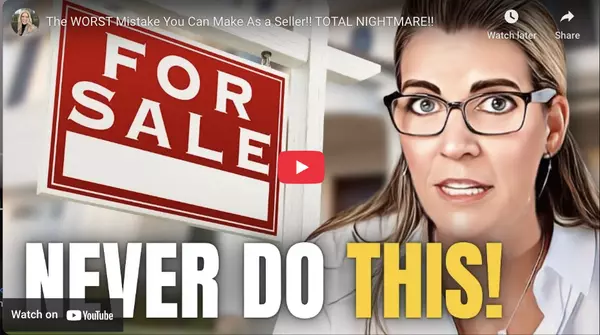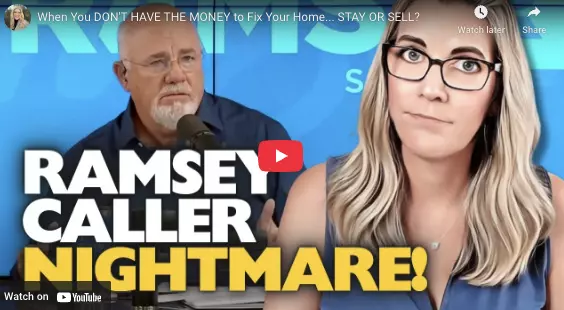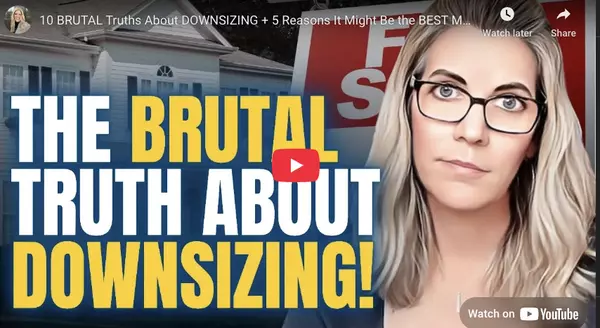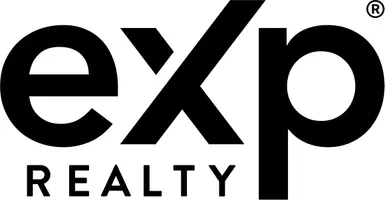STOP Wasting Money On RENOVATION Mistakes
STOP Wasting Money On RENOVATION Mistakes
If you're thinking about selling your home, one of the first questions that probably pops into your mind is: Should I renovate? Should you repaint your kitchen? Replace the carpet? Update the bathroom? The answer isn’t as simple as just saying "yes" or "no." There are a lot of factors at play, and without a clear understanding of where your home stands, making the wrong renovation decisions can cost you thousands of dollars—money that might not yield a return.
That’s why in today’s vlog, I’m going to walk you through exactly how you can evaluate whether or not a renovation is worth it, using a real-life listing example. We’ll dive into how I assess a home, categorize its condition, and figure out what upgrades (if any) will make the biggest difference for resale value. Plus, stick around until the end for the five biggest mistakes homeowners make when preparing to sell. Trust me, the last one is something you haven’t thought about yet.
The Real-Life Scenario: A Seller in a Rush
So, let me tell you about one seller who reached out to me after being in my database for eight years. This seller hadn’t been actively communicating or asking questions, but suddenly they said, “Kati, we’re ready to sell. Let’s go!” It was a bit of a surprise because we hadn’t discussed renovations, pricing, or even looked at the condition of their home in years. I figured when I saw the house, it probably wouldn’t be in perfect shape—likely in need of some updates before going on the market.
The Home’s Condition: Not Show-Ready, But Livable
When I walked through the house, I could tell it was in decent condition, but not in “show-ready” shape. The carpets were worn, the walls weren’t very neutral, and the overall vibe wasn’t particularly trendy. The kitchen and bathrooms had been updated some years ago but weren’t exactly new. But here's the thing: It was still livable. Not a total disaster, just a little dated in some areas.
One of the biggest issues? The seller was in a rush and didn’t want to spend a few thousand dollars on repairs or upgrades—things like repainting or replacing the carpet—which are often necessary to make a home look its best for potential buyers.
The Real Cost of Renovations: Understanding the Investment Matrix
This is where my proprietary Investment Matrix comes in. Over the years, I’ve developed a system that helps me assess a home's condition and figure out how much money should be spent on updates before listing. Instead of asking your agent to make recommendations, my matrix lets you do this yourself.
When I evaluated this home, I immediately placed it in the Concealable Condition category. Essentially, this means the home looked okay at first glance, but had some visible flaws that could be “faked” or covered up for the listing. And that’s important because it gives us a starting point to decide what renovations are worth it and what’s better left alone.
The Five Categories of Home Condition
Here’s a quick breakdown of the five categories that I use to assess a home’s condition:
- Restoration Required: This is the total gut job—the house needs everything from structural repairs to new floors, new kitchen, new bathrooms, the whole nine yards.
- Concealable Condition: The house looks okay but needs some updates. You can cover flaws, fix small things, and it can still look good for the market.
- Surface Shine: The house might look pretty good, but there's some deferred maintenance—things like minor repairs that can be fixed without a full remodel.
- Unpolished Potential: This is a home in really good condition but maybe a little outdated. Buyers can move in and make their own updates over time.
- Modern Move-In: This is the ideal condition—everything updated, trendy, and turnkey. Think HGTV-style, where everything is new and beautifully designed.
The Big Decision: Spend Big or Keep It Small?
In this case, the home fell squarely in the Concealable Condition category. It wasn’t worth spending tens of thousands of dollars to completely redo the kitchen or bathrooms. Here’s why: Spending $20,000–$40,000 on a new kitchen might have been nice, but it wouldn’t have been a wise investment since the house still needed work elsewhere—like replacing carpets, painting walls, and addressing other cosmetic issues.
Instead, I recommended small, strategic updates—just enough to improve its appearance without over-investing. In the Concealable Condition category, spending about 2%–5% of the home’s value on improvements is typical. For a home worth $400,000, that would mean spending about $8,000–$20,000.
What did we do? We focused on some low-cost upgrades to make the home more presentable, like:
- Replacing the carpet
- Repainting the walls
- Doing some minimal staging (virtually, which I usually don’t love, but it was worth trying in this case)
The Virtual Staging Dilemma
While virtual staging can make a home look better in photos, it doesn't always lead to great results in person. In this case, the virtual staging helped to hide some flaws—like old wallpaper or worn-out carpet—but it didn’t fully solve the problem. People who saw the photos and then walked through the house often felt like it was missing that energy, and it didn’t feel as fresh as it looked online.
The Price Factor: Don't Overprice Based on Updates
Pricing the house right is just as important as making updates. If the home is priced too high for its condition—especially compared to other homes in the area—you risk losing potential buyers. In this case, the house was competing against a similar model that had more updates and was priced a little higher, which made it harder to attract interest in the first place.
One of the most important takeaways here is pricing: If you're not getting showings, your price is likely too high for the condition of the home. Overpricing will turn off buyers, especially when they see homes in better condition for a similar price.
The Five Biggest Mistakes Sellers Make
Now, before I wrap up, I want to give you a sneak peek into the five biggest mistakes homeowners make when getting their home ready to sell:
- Don’t make cosmetic changes before checking your home’s base condition: Don’t update the kitchen if your roof is leaking or your HVAC is on its last legs.
- Don’t over-improve your home: Know when it’s worth spending money and when it’s not. Use the investment matrix!
- Don’t ignore small repairs: Fix those little things like a broken doorbell or leaky faucet. Buyers notice the small stuff.
- Don’t hire the wrong real estate agent: It’s the biggest mistake you can make. A knowledgeable agent will guide you in the right direction and help you avoid costly mistakes.
- Don’t neglect regular cleaning: Clean your home consistently, even before listing it. Regular cleaning ensures that minor issues don’t go unnoticed and reduces the workload before a big deep clean.
Final Thoughts: Be Prepared Before You Sell
Preparing your home for sale can be a stressful and overwhelming experience, but with the right strategy, you can avoid costly mistakes and maximize your home’s value. By using tools like the Investment Matrix and making smart, targeted updates, you can get your home ready for sale without over-spending.
Don’t forget to subscribe to my channel for more expert tips and updates on how to navigate the real estate market. And if you’re in the process of selling or just want to chat about your home’s condition, feel free to drop a comment below or reach out!
Remember, you don’t have to go through this alone. We’ve got a supportive Facebook group where homeowners like you share advice, ask questions, and support each other through the selling process.
So, what are you waiting for? Let’s make sure you’re not wasting money on renovations that won’t pay off!
Recent Posts











